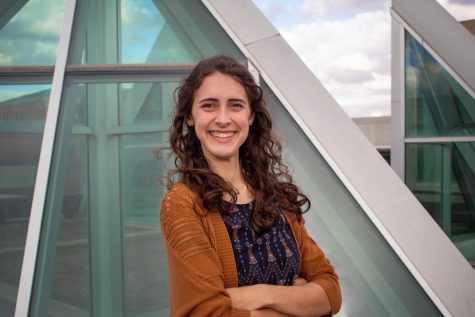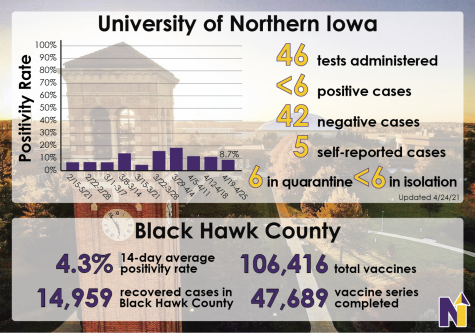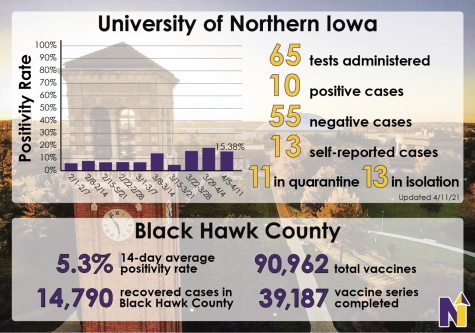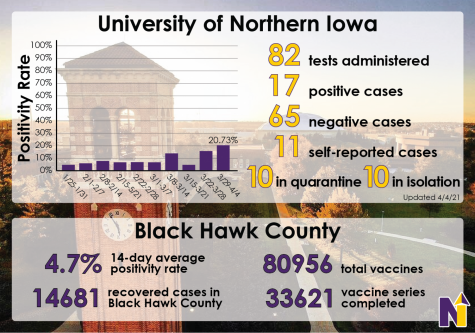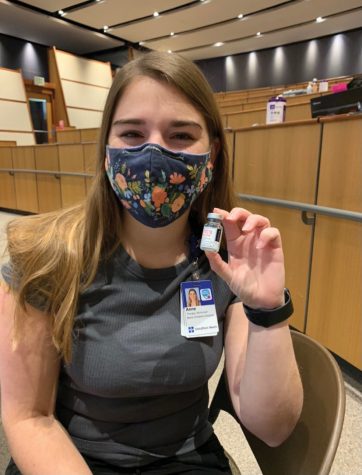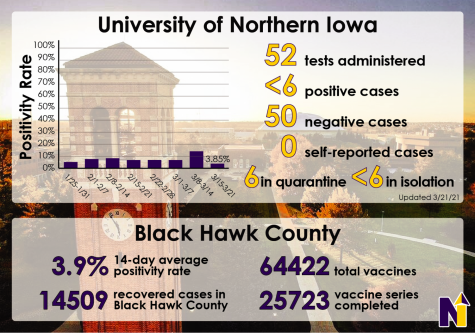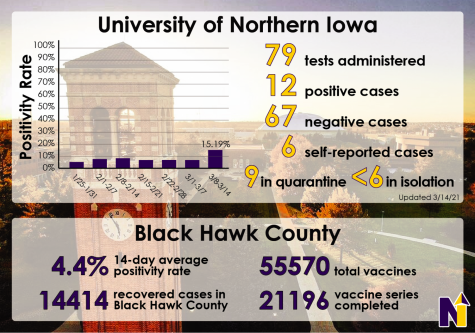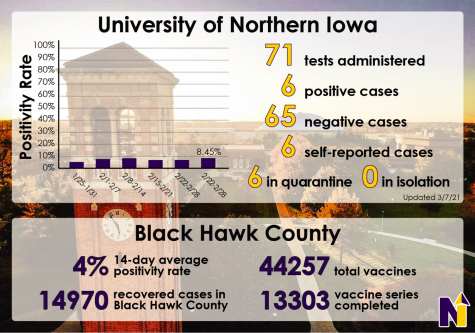CRRSAA funds to be distributed soon
Unlike the CARES Act, students do not need to apply for CRRSAA as funds are to be distributed based off of need.
Mar 1, 2021
More than 3,300 UNI students will soon receive COVID-19 relief funding as part of the latest federal aid package, which gave the university more than $3.8 million to distribute to students with “exceptional need.”
This funding is available through the Coronavirus Response and Relief Supplemental Appropriations Act, 2021 (CRRSAA). Signed into law in December 2020, CRRSAA gave the U.S. Department of Education about $22.7 billion to distribute to institutions of higher education through the Higher Education Emergency Relief Fund II (HEERF II).
As part of HEERF II, UNI is receiving $3,809,369 in relief funds for students, the same amount the university received under the Coronavirus Aid, Relief and Economic Security Act (CARES Act) of March 2020. However, the two federal relief packages have several important distinctions which will affect the way students receive funding, according to Timothy Bakula, Director of the UNI Office of Financial Aid and Scholarships.
“To me, CARES is a separate program that is essentially completed,” he said. “This is a new legislative action that is passed. A lot of students still tie the two together and there are similarities in that, but there’s also… some differences. They shouldn’t be viewed in the exact same light, other than they both helped students through the pandemic.”
One crucial difference is that unlike the CARES Act, the CRRSAA requires that institutions prioritize students with “exceptional need,” such as (but not limited to) students who receive Pell Grants, when awarding aid.
With this guidance in mind, Bakula said UNI decided to take a different approach when distributing the HEERF II funding. Rather than asking all students to apply for funding, as the university did with CARES, grants of $1,000-$1,200 will be directly distributed to students with exceptional need, based on their Expected Family Contribution (EFC) identified in the Free Application for Federal Student Aid (FAFSA).
“Our office and (Senior Leadership Team) decided how we should set these parameters to help as many students as we can while still giving a nod to students with greatest need,” Bakula said.
He added the new funding will provide assistance to just over 3,300 students, which he said is about one-third of the university’s spring enrollment.
Eligible students have been notified via email and do not need to complete any additional application to receive the funding, which will credit on or around March 12, according to Bakula.
The grants can be used to help cover expenses related to the cost of attendance (e.g., food, housing and utilities, health insurance, mental health care, transportation or childcare) or for emergency costs that arise due to coronavirus. Additionally, students can choose to have HEERF II funding credit directly to their U-bill to pay tuition or room and board costs, an option that was not available with CARES Act funding.
While applying funds to cover an unpaid U-bill is not required, it is “strongly encouraged,” according to Bakula.
“One way or another, that bill’s going to have to be paid in order to register, and that’s coming up at the end of this month,” he said.
Students have until about March 10 to decide whether they would like the funding applied to their U-bill. If they choose not to apply it, they will automatically receive a refund for the amount.
Bakula emphasized that the Office of Financial Aid and Scholarships can work with students who may not have been deemed eligible for HEERF II funding but are still facing financial hardships due to the pandemic. In particular, he mentioned international students, who are not eligible for federal COVID-19 relief funds due to the Welfare Reform Act of 1996, which dictates that federal funding sources cannot go to non-citizens.
“We don’t have the funding through this source to provide for every student that may come forward, but we would look at aid options and what this resource might allow them to receive,” he said. “It may not be HEERF II funding you get, but we want to know if there’s something we can do to assist.”
For more information about CRRSAA, HEERF II and other pandemic relief funds available to UNI students, visit finaid.uni.edu/HEERF or email the Office of Financial Aid & Scholarships at [email protected].



